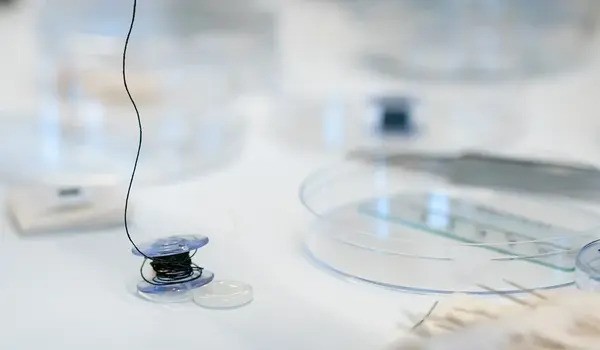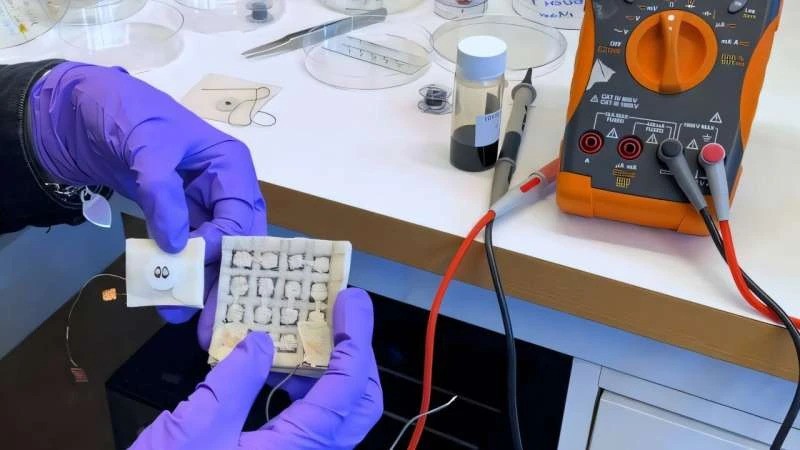Consider a sweater that can power devices to monitor your health or charge your phone while running. This development faces problems because to a scarcity of materials that both conduct electricity reliably and are suitable for textiles. A research group lead by Chalmers University of Technology in Sweden has developed an ordinary silk thread coated with a conductive polymeric substance that has intriguing features for converting textiles into electricity generators.
Thermoelectric textiles transform temperature variations, such as those between our bodies and the surrounding air, into electrical potentials. This technology has the potential to significantly improve our daily lives and society. Connected to a sensor, the textiles can power these gadgets without the use of batteries. These sensors can be used to track our movements and assess our heart rate.
Because textiles must be worn close to the body, the materials utilized must meet high safety and flexibility standards. The researchers investigated silk thread that was coated with a conductive polymer. It is a plastic substance with a chemical structure that makes it electrically conductive and suitable for textiles.
“The polymers that we use are bendable, lightweight and are easy to use in both liquid and solid form. They are also non-toxic,” says Mariavittoria Craighero, who is a doctoral student at the Department of Chemistry and Chemical Engineering at Chalmers University of Technology, and first author of a recently published study.
We found the missing piece of the puzzle to make an optimal thread – a type of polymer that had recently been discovered. It has outstanding performance stability in contact with air, while at the same time having a very good ability to conduct electricity. By using polymers, we don’t need any rare earth metals, which are common in electronics.
Mariavittoria Craighero
Enhanced stability and conductivity
The method used to make the electrically conductive thread is the same as used in previous studies within the same research project. Previously, the thread contained metals to maintain its stability in contact with air. Since then, advances have been made to manufacture the thread with only organic (carbon-based) polymers. In the current study, the researchers have developed a new type of thread with enhanced electrical conductivity and stability.
“We found the missing piece of the puzzle to make an optimal thread – a type of polymer that had recently been discovered. It has outstanding performance stability in contact with air, while at the same time having a very good ability to conduct electricity. By using polymers, we don’t need any rare earth metals, which are common in electronics,” says Mariavittoria Craighero.
To demonstrate how the new thread can be used in practice, the researchers created two thermoelectric generators: a button sewed with the thread and a piece of fabric with sewn-in threads. When they placed the thermoelectric fabrics between hot and cold surfaces, they could see how the voltage on the measuring instrument grew. The effect was dependent on the temperature difference and the amount of conductive substance in the textile.

For example, with a temperature difference of 30 degrees Celsius, the larger piece of fabric produced around 6 millivolts. It has the potential to charge portable electronics via a USB connector when combined with a voltage converter. The researchers were also able to demonstrate that the thread’s performance is consistent for at least a year. It is also machine-washable.
“After seven washing, the thread maintained two-thirds of its conducting capabilities. This is an excellent result, but it must be greatly enhanced before it becomes economically viable,” adds Mariavittoria Craighero.
Can meet functions that these textiles require
The thermoelectric fabric and button cannot be produced efficiently outside the lab environment today. The material must be made and sewn in by hand, which is time-consuming. Just sewing it into the demonstrated fabric required four days of needlework. But the researchers see that the new thread has great potential and that it would be possible to develop an automated process and scale up.
“We have now shown that it is possible to produce conductive organic materials that can meet the functions and properties that these textiles require. This is an important step forward. There are fantastic opportunities in thermoelectric textiles and this research can be of great benefit to society,” says Christian Müller, Professor at the Department of Chemistry and Chemical Engineering at Chalmers University of Technology and research leader of the study.
More about the research field
Interest in organic electronics based on conjugated polymers has developed significantly in recent years. Conducting polymers have a chemical structure that allows them to conduct electricity in the same way as silicon does, but they also have the physical qualities of plastic materials, making them flexible. Conductive polymer research is active in a variety of fields, including solar cells, the Internet of Things (IoT), augmented reality (AR), robotics, and different sorts of portable electronics. In addition to the research group responsible for the current work, two more research groups are operating in the same department at Chalmers University of Technology.
















